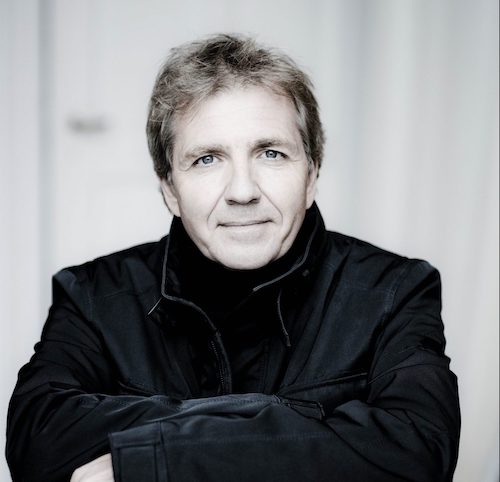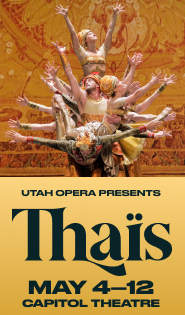Utah Symphony’s retooled program ranges from Bach to Black Lives Matter

While most American orchestras have canceled their fall schedules to avoid the risk of COVID-19 entirely, Utah Symphony is proceeding with a drastically altered lineup that is, in turn, producing a very different kind of concert experience.
A circumspect season opener last week featured only strings in an auditorium retrofitted for social distancing, and an attendance cap of 400 people in a venue that normally seats almost eight times that number.
This weekend’s offering, with the same precautions, also includes members of the woodwind, brass and percussion sections, although not as a combined force with strings. It’s a modified concept of classical music that takes getting used to. But the good news is that, after more than six months of voluntary shutdown since the pandemic cut short concert seasons everywhere, there are live performances once again in Salt Lake City.
Thursday’s program opened with music director Thierry Fischer conducting 10 members of the string section and principal keyboardist Jason Hardink in Bach’s Brandenburg Concerto No. 3 in G major. The outer movements were taken at Fischer’s trademark brisk clip — which, especially in the opening movement, created some blurred lines and fuzzy phrasings. But the players, to their credit, did a fine job bringing an effortless flow and cohesiveness to the music.
The slow movement, instead of just the two chords that Bach notated in the score, was a short duet with an improvisatory feel between concertmaster Madeline Adkins and Hardink that served as a welcome break between the rather rushed fast movements.
Arnold Schoenberg’s Verklärte Nacht (Transfigured Night) followed, in a string orchestra version the composer made in 1917. While the original string sextet of 1899 has much to offer, especially in the intimacy of its small ensemble setting, Fischer coaxed lush and emotionally charged playing from the larger assembly. His expressive approach to the music dug into into the nuances and intricacies of the score, and yielded climaxes that flowed naturally and subsided seamlessly. The Utah strings played with clearly defined phrasing and articulation, complemented by a beautifully expressed lyricism.
The rest of the concert featured works by living American composers. First up was Valerie Coleman, founder and flutist of New York City-based Imani Winds, and a prolific composer besides. Two movements — the first and third — from Coleman’s Afro-Cuban Concerto for wind quintet are on this weekend’s program, and the Utah Symphony principals made the most of its picks.
In the rhythmically dynamic first movement, “Afro,” the players bounced motives among the five instruments and melded their distinctive voices beautifully to give a solid account of Coleman’s well-crafted musical interplay. The third movement, “Danza,” is filled with syncopations set against melodic phrases, and here the quintet ably captured the contrast and juxtaposition of legato and staccato notes.
After a 10-minute break — full intermissions are out until further notice — the concert concluded with two short pieces, Andrea Venet’s Omnes Trio for three percussionists, and Quinn Mason’s Changes/Transitions for brass and percussion.
Venet’s piece is scored for drums, cymbals and gongs to create an interesting tripartite fusion of sound that the Utah players summoned with verve. Mason’s piece was commissioned for the Utah Symphony brass by principal trombonist Mark Davidson, and is a musical tribute to the Black Lives Matter movement. The symphony premiered Changes/Transitions in a video performance in August.
Thursday’s in-person debut was set to video and photos from protests across the country sparked by George Floyd’s death in police custody in Minneapolis. Projected on a large screen behind the players, the imagery was a powerful counterpoint to the performance of Mason’s music, with the two elements combining for a somber, stirring and thought-provoking finale.
The program repeats at 7:30 p.m. Friday and Saturday. utahsymphony.org; 801-533-6683. The season continues Oct. 1-3 with the annual “¡Celebración Sinfónica!” of Latin American composers, conducted by Enrico Lopez-Yañez. utahsymphony.org; 801-533-6683.

